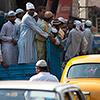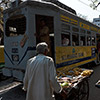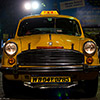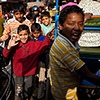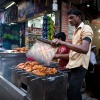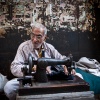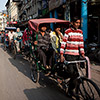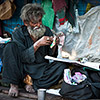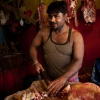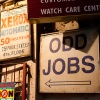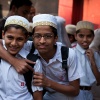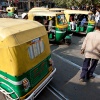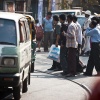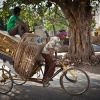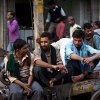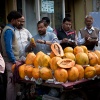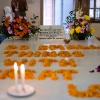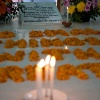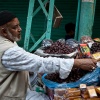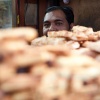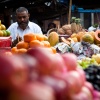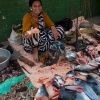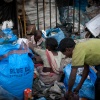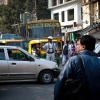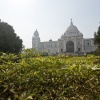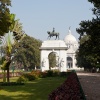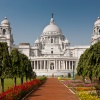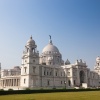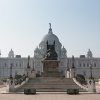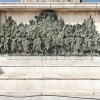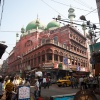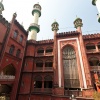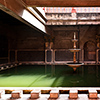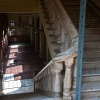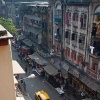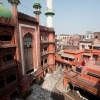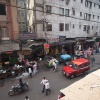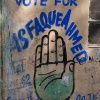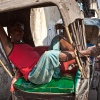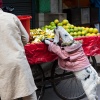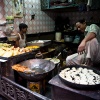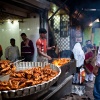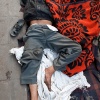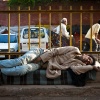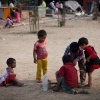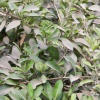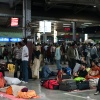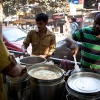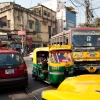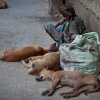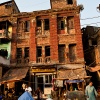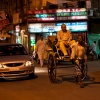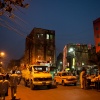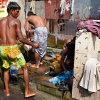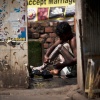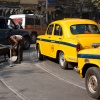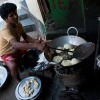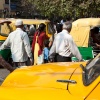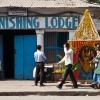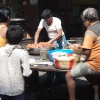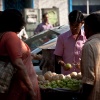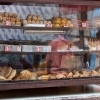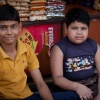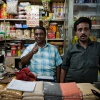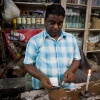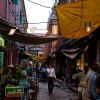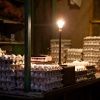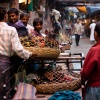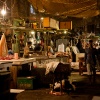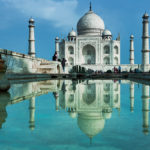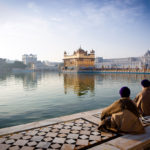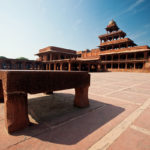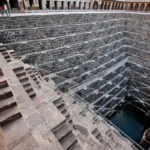Calcutta – Out of (Traffic) Control
What is the most important part of the body of someone living in Calcutta? Correct, the honk. It doesn’t matter if a car, motorcycle, rickshaw or bicycle: without it nothing is going on, whether it’s hand-driven or with an echo effect. Calcutta’s traffic, or to be precise the way people are behaving is beyond every experience “enjoyed” thus far. It takes no three seconds until the next high frequency noise is drilling its way through the ear to your brain. It’s a sheer miracle that people aren’t deaf yet… Its horrific traffic as well as unbelievably dirty and unhygienic circumstances are definitely the most dominating elements of the city, making Calcutta being hell’s small forecourt. Fortunately it had a guardian angel, a little woman from Albania: Mother Theresa.
In Scandinavia pedestrians only have to look at a cross over and all cars closer within 2 kilometres are stopping instantly to guide you in the friendliest way over the street. Calcutta is the direct opposite as you’ll be hunted by an army of honking yellow Ambassador taxis when trying to cross the battlefield by foot. Lonely Planet is saying beggars are Calcutta’s major annoyance, which is by far wrong. It’s definitely the traffic madhouse and even your sheltering hotel is not able to protect you from it. The 24 hours a day, 7 days a week happening honking concert plus stimulus satiation will catch you everywhere. Terrible!
Despite being located at lively junction of Ballygunge Circular Road and Riperton Street, Mother Theresa’s House is one of the more quiet places though. Even if not being religious, it is amazing to see what this little lady has done, how she inspired people and helped others without thinking about herself too much and when standing in front of her tomb or looking through the window of her tiny chamber, then you’ll be nothing but awe-struck leaving your camera in the backpack; for visitors thinking differently it’s not permitted, except photographing the tomb.
One of Calcutta’s most impressive sights is the Queen Victoria Memorial, which is a kind of an Indian U.S. Capitol. In the evening the building called VM by the locals becomes part of a sound and light show. The surrounding park as well as the Maidan Park might be nice, though they act more or less as a dust filter for the city’s smog.
When driving on Rabindra Sarani northwards and stopping at the Zakaria Street junction, you’ll literally bump into the sturdy Nakhoda Mosque, being built right into a maze of different houses. Tourists may visit the mosque and after a friendly “as salamu alaikum” it was no problem even to climb up a minaret, which is remarkably hospitable! The compact mosque is a quite good example for India’s multi-religiosity, where a Hindu eye-winkingly jokes “I don’t like him. He cuts the cow!” while the Muslim answers “And you like dogs, drink alcohol eat and pork…” Both are getting along quite well though, which shouldn’t be taken for granted as for example in Kashmir politically raised religious disputes are on the agenda.
The historic settlement areas of Calcutta, a city being home to 16 million people, can be terrifyingly dirty; so dirty that I was thinking twice, if not to say a third time, if I will include suchlike photos in this article or not. Waste water, of course also faecal ones, flowing in the kerbs along the roads while children are playing with it and a “cook” (having 50 guests later) is washing his pots with it. Yummy! As for the photo showing the fishmongers on the roads, behind the green wall there was an approx. 3-4 weeks old human corpse lying that got already looted by the dogs. A horrible picture…!
Lungs being liberated from fine dust might live longer in Europe, but definitely get a problem once being faced with a dirt attack like in Calcutta. You only have to have a closer look at the plants framing the roads and the layer of dust on their leaves. It’s the very same greyish colour that is disappearing from your skin as grey water after having taken the evening shower. Of course the shopping mall spangled city centre is much cleaner as here Calcutta’s elite is isolating itself from the rest of the world. Logically there you won’t meet an authentic part of India though as the usual generic glass and steel architecture takes over the control and nothing but non-organic replaceable shops like as Golce & Gabbana etc. are left.
There’s not much remaining of the redolence of fresh Samosas being made of rice and lentils when the snack stop is located at a corner where hundreds of people per day are urinating. Having this smell in the nose you give way to the tram cutting its path unbendingly through the mass of cars, rickshaws and people like a Russian super armour. Once more someone drove over your foot; fortunately toes are covered in good mountaineering shoes as otherwise your foot would be crushed now. And if it’s not the foot, then surely your elbows will get a shellacking. If reincarnation, then please please not in Calcutta and least of all as part of its traffic.
Escaping suchlike scenes is possible though, for example when visiting the New Market. Admittedly it looks strange when turning up there and the first picture you see is and army of crows and birds of prey pitching into waste of the poultry market’s slaughterhouse, but at New Market you can make a very good deal in spices and tea from Assam or Darjeeling. You meet friendly blokes like Shaduh, whose kiosk is stuffed with awesome things like the one and only Kashmir saffron or Masala’s mixed according to your taste. Also he’s got the extremely hot Bhut Jolokia chilli powder being so hot, that 50 grams are enough for the rest of your life.
Despite a traffic caused stimulus satiation there are chances to get in touch with the locals. The butcher wearing a sweaty singlet only was so taken with having a flirt with the camera, that he barely managed drawing back his fingers from the meat cutting machete blade. Life in Calcutta is happening on the streets. Along the veins claimed by traffic you can enjoy much more than having a look over the butcher’s shoulder only. When living in a billion people country like India is somehow obvious that the locals don’t really fear physical contact with others; they are even washing themselves and every part of their bodies in the public. Regardless of grossly polluted and unhygienic circumstances there are many things are to become discovered by travellers. When travelling India for a longer time you’re automatically getting more and more voracious when thinking of vegetables being not cooked to rags and fresh fruit as. Please only use bottled water to wash away traffic pollution and dust.
